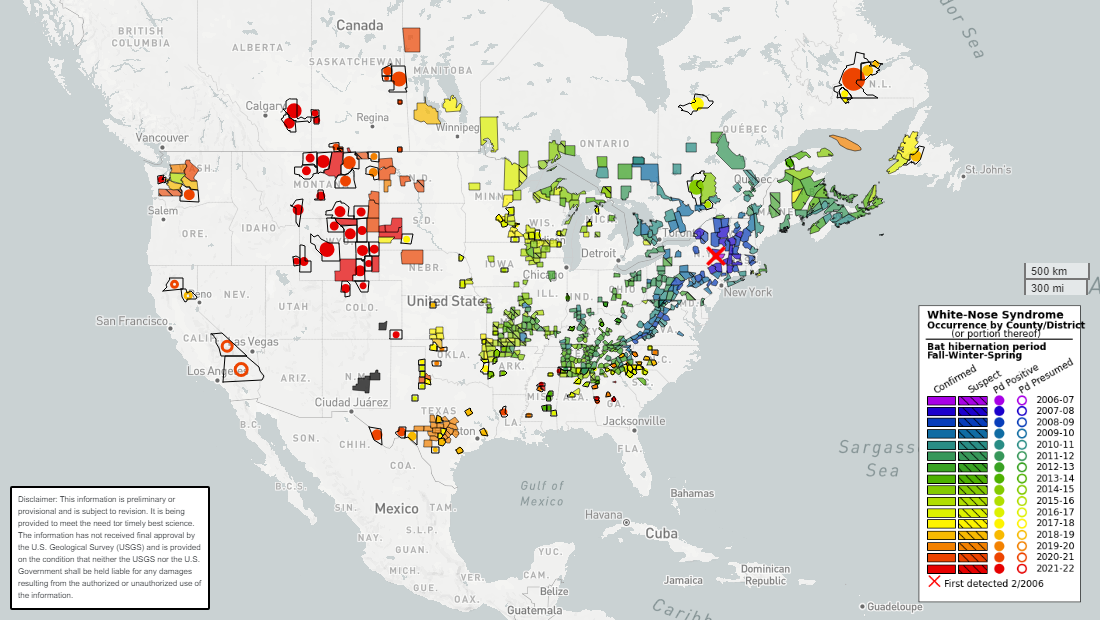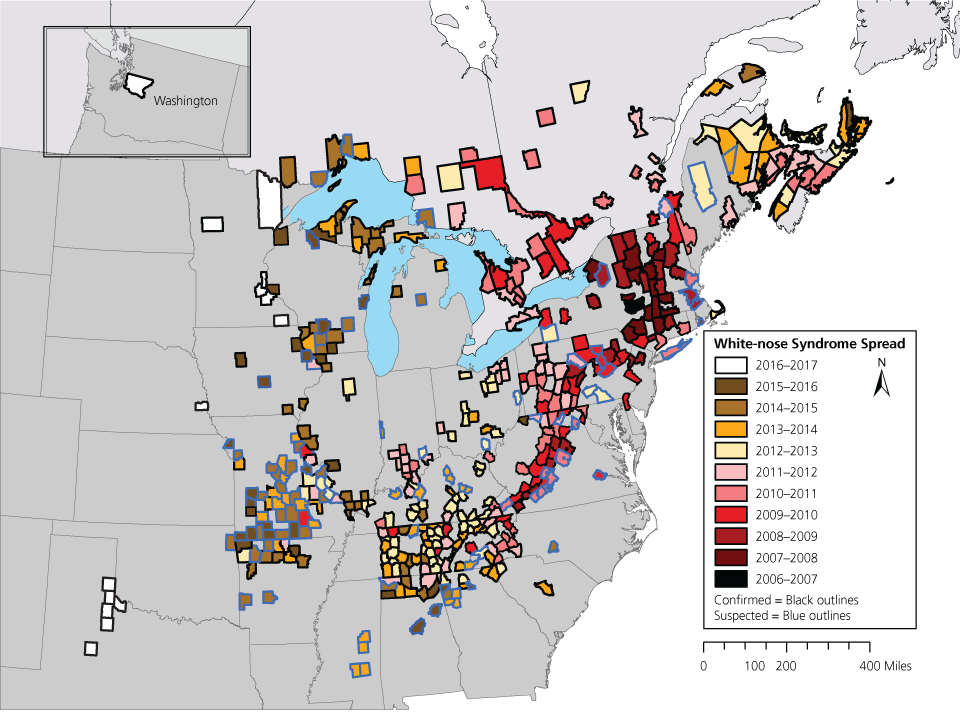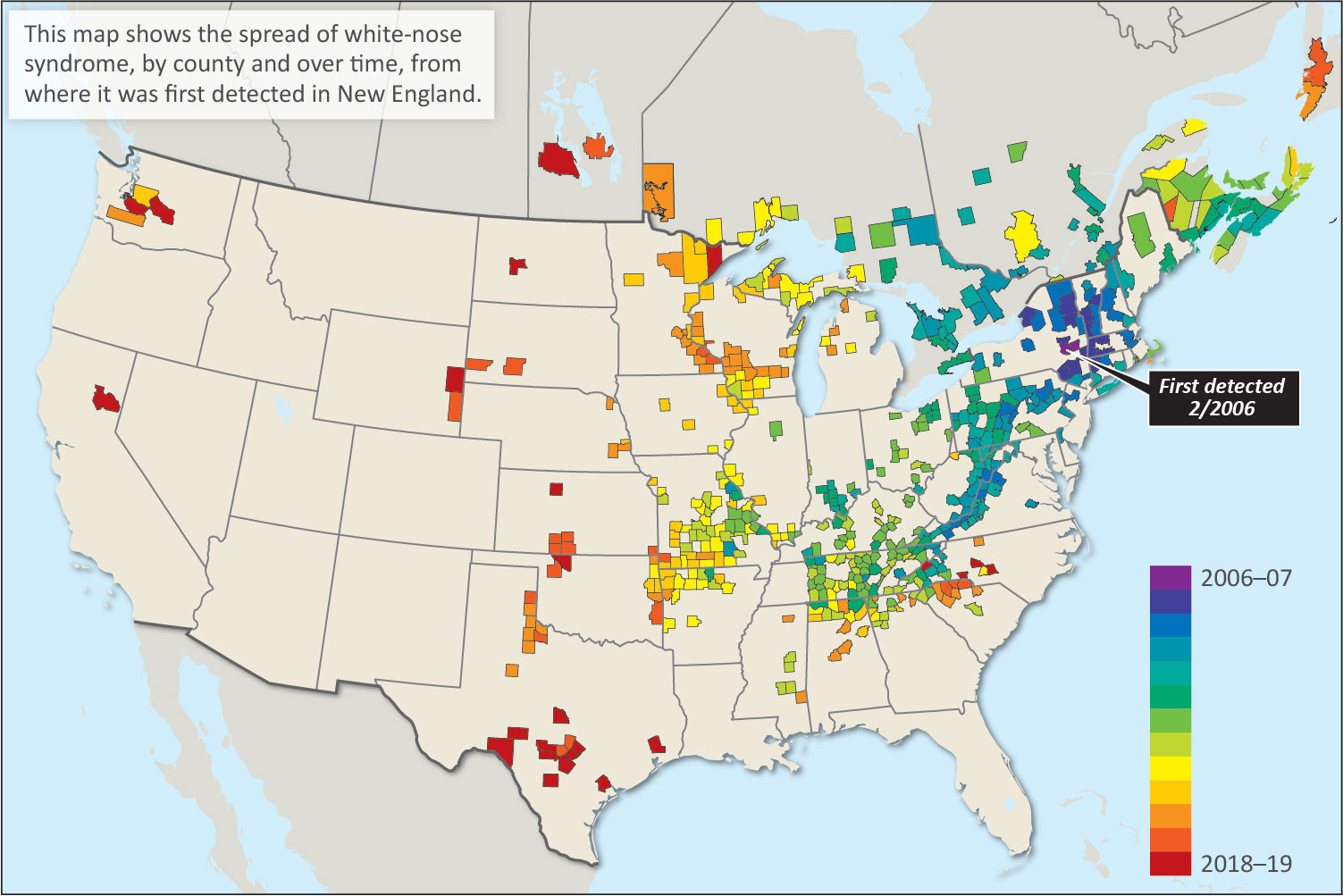White-Nose Syndrome Map – Here in New York, there are nine species of bats. Six of these live and hibernate in multi-populous colonies, in caves; three live outside, individually, upside down in trees, and migrate to warmer . White-Nose Syndrome (WNS) has emerged as a grave concern for bat populations across the United States, casting a shadow over their existence and ecosystem stability. First documented in New York in .
White-Nose Syndrome Map
Source : www.whitenosesyndrome.org
Overview White nose syndrome Bat Conservation Trust
Source : www.bats.org.uk
White Nose Syndrome Map | FWS.gov
Source : www.fws.gov
White nose Syndrome and Bat Hibernation Areas
Source : www.biologicaldiversity.org
White Nose Syndrome
Source : www.whitenosesyndrome.org
White Nose Syndrome Page
Source : legacy.caves.org
White nose syndrome decontamination procedures for backcountry
Source : www.nps.gov
Deploying new tools to stem loss of bats | NFWF
Source : www.nfwf.org
Partners for Bats (U.S. National Park Service)
Source : www.nps.gov
White nose syndrome occurrence map by year (2019) | U.S.
Source : www.usgs.gov
White-Nose Syndrome Map White Nose Syndrome: The bat is one of many decimated by a fungus called white-nose syndrome (WNS), which continues to spread across the United States and Canada. The Adirondack Explorer thanks its advertising partners. . This image shows a hibernating little brown bat infected with white-nose syndrome. Disclaimer: AAAS and EurekAlert! are not responsible for the accuracy of news releases posted to EurekAlert! .









